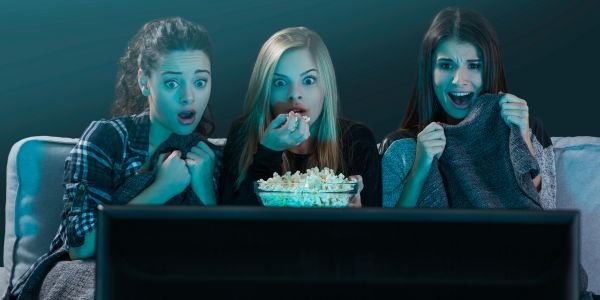Table of Contents
Intrusion prevention systems (IPS) are a type of network security technology that monitors network and system activities for malicious activity and then takes action to prevent any detected threats. IPS technologies are designed to identify and prevent threats before they can cause harm to an organization’s network or systems.
An IPS can be configured to monitor network traffic for specific types of activities or events, such as attempted network intrusions or unauthorized access to sensitive data. When an IPS detects a potential threat, it can take a variety of actions to prevent it, such as blocking the traffic, quarantining the traffic, or alerting security personnel.
IPS technologies use a combination of signature-based and anomaly-based detection methods to identify potential threats. Signature-based detection involves identifying known patterns of malicious activity, while anomaly-based detection involves identifying unusual patterns of activity that may indicate a potential threat.
IPS technologies are an important part of a comprehensive network security strategy, as they provide an additional layer of protection against cyber threats. They can be used with other security technologies, such as firewalls and antivirus software, to provide a more comprehensive approach to network security.
What Are Intrusion Prevention Systems?
Intrusion prevention systems (IPS) are network security technology that helps protect an organization’s network and systems from cyber threats. They work by monitoring network and system activities for malicious activity and taking action to prevent any detected threats.

An IPS can be configured to monitor traffic on a network for specific types of events or activities that may indicate a potential threat. For example, it might look for patterns of activity that are commonly associated with attempted network intrusions or unauthorized access to sensitive data.
When an IPS detects a potential threat, it analyzes the traffic to determine the nature and severity of the threat. Based on this analysis, it can take a variety of actions to prevent the threat from causing harm to the network or systems. These actions might include blocking the traffic, quarantining the traffic, or alerting security personnel.
In addition to these prevention actions, an IPS also logs all detected threats and the actions taken to prevent them, which can be used for later analysis and reporting.
Overall, an IPS helps to protect an organization’s network and systems by identifying and preventing malicious activity before it can cause harm.
Example
An IPS is installed on the organization’s network and configured to monitor traffic for specific types of activities or events that may indicate a potential threat.
An employee attempts to access sensitive data on the network from an unauthorized location.
The IPS detects this activity and analyzes the traffic to determine that it is a potential threat.
The IPS takes action to prevent the threat from causing harm to the network or systems. This might include blocking the traffic, quarantining the traffic, or alerting security personnel.
The IPS logs the detected threat and the actions are taken to prevent it, which can be used for later analysis and reporting.
In this example, the IPS helped to protect the organization’s network and systems by identifying and preventing an unauthorized access attempt before it could cause harm.
Working of Intrusion prevention systems
Intrusion prevention systems (IPS) work by monitoring network and system activities for malicious activity and taking action to prevent any detected threats. Here is a general overview of how IPS works:
Configuration: An IPS is installed on the organization’s network and configured to monitor traffic for specific types of activities or events that may indicate a potential threat.
Monitoring: The IPS continuously monitors network traffic for patterns of activity that may indicate a potential threat. This can include analyzing traffic for known patterns of malicious activity (signature-based detection) or looking for unusual patterns of activity that may indicate a potential threat (anomaly-based detection).
Detection: When the IPS detects a potential threat, it analyzes the traffic to determine the nature and severity of the threat.
Prevention: Based on the analysis, the IPS takes action to prevent the threat from causing harm to the network or systems. This might include blocking the traffic, quarantining the traffic, or alerting security personnel.
Logging and reporting: The IPS logs all detected threats and the actions taken to prevent them, which can be used for later analysis and reporting.
Overall, an IPS helps to protect an organization’s network and systems from cyber threats by identifying and preventing malicious activity before it can cause harm.
Use Of Intrusion prevention systems (IPS)
Intrusion prevention systems (IPS) are a type of network security technology that helps to protect an organization’s network and systems from cyber threats. They work by monitoring network and system activities for malicious activity and taking action to prevent any detected threats.
Preventing network intrusions: An IPS can detect and prevent attempts to gain unauthorized access to an organization’s network. For example, if an attacker tries to exploit a vulnerability in a network device, the IPS can block the traffic and prevent the attacker from gaining access.
Protecting against malware: An IPS can detect and prevent the spread of malware on an organization’s network. For example, if an employee accidentally downloads a malicious file, the IPS can block the file from being transmitted to other devices on the network.
Detecting and preventing unauthorized access to sensitive data: An IPS can detect and prevent unauthorized access to sensitive data on an organization’s network. For example, if an employee attempts to access a confidential database from an unauthorized location, the IPS can block the access attempt and alert security personnel.
Monitoring network activities for unusual patterns: An IPS can monitor network activities for unusual patterns that may indicate a potential threat. For example, if an employee’s account suddenly starts accessing a large number of files that they normally do not access, the IPS might flag this activity as suspicious and alert security personnel.
Overall, IPS technologies help organizations protect their networks and systems from cyber threats by detecting and preventing malicious activity before it can cause harm.
FAQ’S
Can an Intrusion Prevention System impact network performance?
Yes, an Intrusion Prevention System can have an impact on network performance, particularly if it is not properly configured or deployed. The inspection of network traffic, deep packet inspection, and real-time analysis can introduce some latency. However, modern IPS solutions are designed to minimize performance impact through hardware acceleration, optimized algorithms, and intelligent traffic filtering techniques.
How does an Intrusion Prevention System handle false positives and false negatives?
False positives occur when an IPS mistakenly identifies legitimate traffic or activities as malicious, leading to unnecessary blocking or alerting. False negatives, on the other hand, happen when the IPS fails to detect actual threats, allowing them to pass through undetected.
IPS solutions employ various techniques, such as fine-tuning detection rules, machine learning algorithms, and behavior analysis, to minimize false positives and false negatives. Regular monitoring, analysis of IPS logs, and fine-tuning of configuration settings are also essential to improve the overall accuracy of the system.Can an Intrusion Prevention System protect against zero-day attacks?
Yes, an Intrusion Prevention System can provide some level of protection against zero-day attacks. While zero-day attacks exploit vulnerabilities unknown to the software vendor, IPS solutions can leverage behavioral analysis, anomaly detection, and signature-based detection methods to identify and block suspicious activities associated with such attacks.
References
- Cisco Systems, Inc. (n.d.). Intrusion Prevention System (IPS). Retrieved from https://www.cisco.com/c/en/us/products/security/intrusion-prevention-system/index.html
- The SANS Institute. (n.d.). Intrusion Prevention Systems. Retrieved from https://www.sans.org/reading-room/whitepapers/detection/intrusion-prevention-systems-535
- Mirkovic, J., & Reiher, P. (2004). A Taxonomy of Intrusion Detection Systems and Approaches. Technical Report, 040010. Retrieved from https://pdfs.semanticscholar.org/8277/6b88887e3f1760b810dc7a7b37f611d2f6b7.pdf
- Mell, P., & Scarfone, K. (2007). Guide to Intrusion Detection and Prevention Systems (IDPS) (NIST Special Publication 800-94). National Institute of Standards and Technology (NIST). Retrieved from https://nvlpubs.nist.gov/nistpubs/Legacy/SP/nistspecialpublication800-94.pdf
- Bachaalany, A., Joshi, J., & Joshi, A. (2018). Intrusion detection and prevention system: A comprehensive review. Computers & Security, 77, 169-192. doi:10.1016/j.cose.2018.04.002
- Alizadeh, M., Leng, S., & Komisarczuk, P. (2013). Intrusion detection and prevention systems: A survey. Journal of Network and Computer Applications, 36(1), 42-57. doi:10.1016/j.jnca.2012.05.001
Also, read the BSF syllabus






























